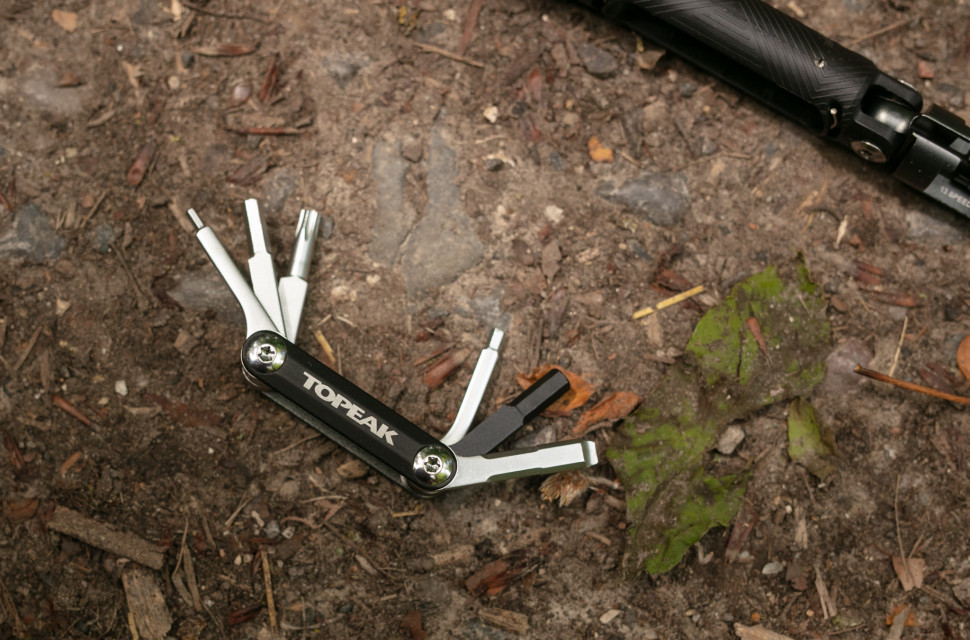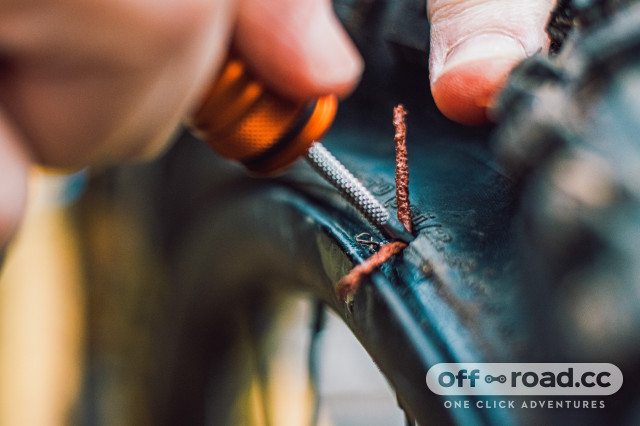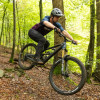Essential tools for off-roading - seven must-have items for beginner mountain bikers and gravel riders

One of the most exciting days of your cycling career is buying your first bike. Whether it’s a fat-tyred mountain bike or a race-ready gravel whippet, rugged two-wheel machines are primed to take their new owner far and wide. However, there’s another side to cycling that must be considered and that’s tools and bike maintenance. Every cyclist needs to learn about their bike and how to use the correct tools – a combination of the two will keep your bike out of a workshop and more money in your wallet. Here are the top tools every rider should own.
- Mountain bike multi-tools: everything you need to know
- Pro Starter Toolkit review
- Can F1 technology benefit mountain biking?
The world of bike tools is a rabbit hole that’s as deep as you make it. Many love to get seriously nerdy with the huge range of tools available, kitting themselves for almost every eventuality. Others, may stay away from massive tool walls and prefer to take their bikes to a professional, and that’s perfectly fine, too.
But it’s always a great idea to swat up on some basic bike maintenance and invest in only a small collection of tools and below are those that you’ll need to get yourself out of the majority of minor to mid-level scrapes. Making a small investment in a budding tool roster will only save you money in the long run. Although, we do recommend purchasing quality kit as cheap tools can be made out of sub-par materials and can create issues such as rounding a bolt head or similar.
At the very least, you need a multi-tool
One of the best bike multi-tools is the best place to start. Some form of multi-tool should be with you during any ride but they’re more than capable of minor tweaks when you’re back home too.
When you’re looking to buy a multi-tool, at the very least, you should look for one with a comprehensive range of Allen bits, 2mm up to 8mm will address all but the largest bolts. A couple of Torx bits are useful too, for SRAM brake levers and shifters but a chain tool is an absolute must-have.
Multi-tools range from meagre seven-function setups right through to whopping 30-function tools. With larger multi-tools, weight becomes a factor as they’re less friendly to carry about in a pocket.
They come in several shapes and sizes, too, with the most common being the folding multi-tool that holds all of its bits within two outer plates. Ratcheting handles are becoming more popular, too, for their improved ergonomics. These often come in larger packages, however.
A proper set of Allen keys
Yes, you can get away with using the Allen bits on your multi-tool, especially if you’ve got one that’s comprehensively equipped but nothing will improve your bike maintenance life more than a quality set of Allens.
The bits that most multi-tools provide are excellent but even the very best multi-tools should be reserved for small on-trail tweaks or get-me-home fixes. A proper Allen key set offers more leverage and as simple as Allen keys are, they’re more ergonomic, especially if you opt for fancy T-handle keys.
They’re longer, too, so you’ll be able to get right into those hard-to-reach places, and some, like those from Wera, are designed to mesh with a bolt head much more securely than those you’ll find on a multi-tool. As such, a good Allen key is far less likely to round a bolt. Granted, if you’ve got a multi-tool, a good set of Allen keys won’t be at the top of your list but they make things easier.
Get a good-quality track pump for your specific needs
Gone are the days when one of the best floor track pumps was capable of all tyre inflation needs. Now, most off-road cyclists are running tubeless tyre setups and there’s a dizzying range of tyre sizes, widths and volumes on the market. With that, you’ll need a track pump that can efficiently fill your specific tyres and enough gusto to seat tubeless tyres.
Nowadays, track or floor pumps come in two types, high volume and high pressure with the former built to deliver large payloads of pressure into wide tyres to get them seated and up to pressure quickly. High-pressure pumps are better suited to skinny road tyres that typically run much higher pressures as they’re designed to reach 80psi and above.
Thankfully, brands have made it easy when describing what their pumps are built for, so you shouldn’t have to look too hard before dropping the cash on the right pump for you. But there is another type of pump to consider – the charger pump. These come with large chambers attached that can be inflated to super high pressures. Once inflated, the user can then release all of that pressure into the tyre, helping it seat onto the rim with ease.
Although these often do a great job of seating the most stubborn tyres, modern pumps of a more regular design have got very good at doing so, too. On top of that, charger pumps are bulky, heavy and a bit more difficult to lug around.
Get a mini-pump, too
As well as a proper track pump, you’ll need a mini-pump to carry around as you ride as punctures are still a constant threat.
There are a few factors to consider when shopping for a mini-pump with perhaps the most important being size – after all, it needs to fit in your pocket or on your bike. It’s worth noting though, that the smaller the pump, the less air it’ll be capable of delivering into your tyre, so the harder you’ll work given the smaller stroke volume However, if you’re looking to pack light and want a pump to get you home, there’s no harm in going on the small side.
Another important feature is a pressure gauge. Again, in the case of a get-me-home repair, going for a pump without a gauge will certainly do the job but if you’re picky with your pressures or planning to put in some big miles, a gauge will come in handy.
Achieve peace of mind with a torque wrench
Most budding home mechanics can get away without using a torque wrench but this will result in under or over-tightening an important bolt. This can lead to the failure of a component in one way or another. And that’s seriously dangerous.
Adding a torque wrench to your toolbox is a surefire way of achieving that peace of mind, and you’ll be surprised by how frequently you’ll end up using it. Several direct-to-consumer brands include a basic torque wrench in the box alongside a new bike – they’re that important.
Torque wrenches are important because every bolt on your bike should be tightened to a specific Newton-metre value. Failure to do so could lead to irreparable damage or injury owing to play between certain component interfaces.
These wrenches come in all shapes and sizes with beam-type wrenches being reasonably affordable and fairly small, so they can be carried about or easily stashed in the car. However, it’s easy to over-tighten as there’s no mechanism to work against it.
Click-type torque wrenches are mostly commonly found in workshops as they often provide a large range of torque ratings, and they work with ¼ driver bits that click when the set torque is reached. As such, they’re rather good at preventing over-tightening. And that’s to name two kinds, as customers can buy preset torque wrenches, digital ones and small adapters that transform regular Allen keys into torque set wrenches.
A shock pump is the single most important tool for air suspension setup
If you ride a bike with air suspension, whether that’s a fully equipped mountain or gravel bike, a shock pump is a total must-have. Going without will leave you seriously limited and unable to achieve the most important aspect of suspension setup – sag.
As the name suggests, air suspension is the most adjustable form of suspension currently available. That adjustability comes in variations of that pressure and the air pressure needs to be set for the rider’s weight. Typically, lighter riders need less pressure and heavier riders need more. Although suspension forks and rear shocks are equipped with Schrader valves, for reasons mentioned in the floor pump section of this piece, regular floor pumps aren’t capable of reaching the high pressures required. As such, you’ll need a shock pump.
Much like torque wrenches, shock pumps are provided in the box by some direct-to-consumer brands and they’re key in setting up sag on air-sprung bikes. Without it, you’ll never achieve a good suspension setup. While the ins and outs of suspension setup can be tricky to get your head around at first, dialling in sag is fairly straightforward and a shock pump can be picked up for a little over a tenner, so there’s no excuse for not having one.
Without tubeless repair, punctures are your worst enemy
Punctures are inevitable. Even the best tubeless tyres can get a puncture and sometimes the tyre sealant can't fix it – which is a big problem when you’re way out in the sticks, miles from the car.
A tubeless repair kit follows a fairly common design, where there’s a reamer, a strip of sticky rubber and something to shove that rubber into a hole. Loads of brands offer them but many come in different forms, from those that hide inside a little capsule for carrying in a backpack or hip pack to those built to be stashed inside a handlebar.
Brands such as Stan’s No Tubes have gone one step further, too, as the DART tool is formulated to react with Stan’s tubeless sealant to create a more permanent repair. However, most tubeless repair systems that rely on plugs to create a better seal should be seen as a get-me-home, emergency repair rather than one that’s permanent as the plugs can be removed under normal riding loads.
There are permanent solutions on the market, such as tyre boots that’ll solve tyre-ending sidewall slashes. A great way of repairing bigger holes is with a leather-specific sewing needle and thread to forcibly close the gap. Lezyne also has Tubeless Pro Plugs, that act as a permanent repair.





















